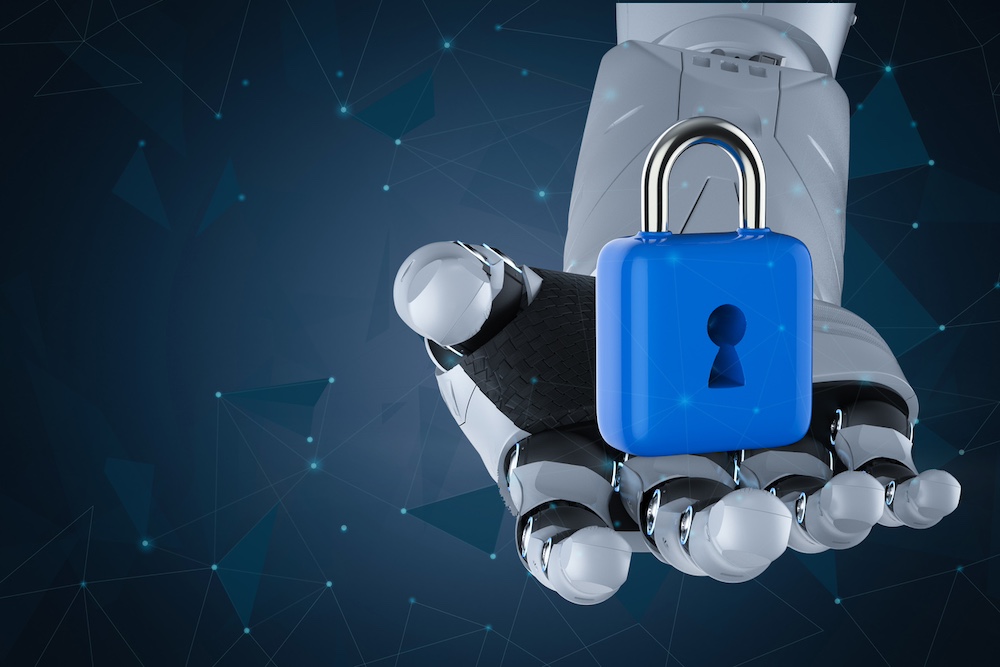Operations Leads Share Benefits, Dependencies and Decisions on Security Automation
Treating security like a business function encourages agency leads to get involved early on.

A lot of time, money and energy in cybersecurity are spent monitoring systems and networks, collecting data and analyzing the information for malicious activity and other anomalies. Automated processes may offer a solution to drive these costs down.
Automation gives organizations a tool to “deal with some of [cybersecurity’s] problems at scale”, said John Felker, assistant director of the Integrated Operations Division at the Cybersecurity and Infrastructure Security Agency at the Borderless Cyber summit Oct. 8.
Automation can guarantee consistent security processes and routinize mundane tasks, allowing cyber analysts to spend more time on strategic decision-making and other priorities that require high-end talent, said Harley Parkes, the integrated adaptive cyber defense lead at the Johns Hopkins University Applied Physics Lab.
However, Parkes cautioned, any organization looking to introduce automation must be mindful of certain dependencies. First, it needs an organization-wide understanding of its business processes and its risk tolerances. It also must hire or train developers that can build automated systems and integrate them with existing network architecture.
Agencies rarely “start from scratch” when designing networks, Felker said, recommending that an important first step is to understand that existing architecture and the constraints it places on any automated process.
Both speakers said that organizations should treat automation like a business process, not as something for only the IT division to consider. Without a full understanding of the agency’s business processes, risk tolerances and developer talent, which requires organization-wide communication, no organization can build successful, applicable, automated processes.
Treating automation as a business process requires putting business managers in charge of decision-making “from the beginning,” Felker said, even if the IT office is tasked with developing automation and implementing it into the existing network architecture.
“It’s a constant process and people need to be involved all along the way,” Felker said. “Make decisions based on the risk you’re willing to accept.”
This organization-wide perspective is especially important for cybersecurity, Parkes said. He recommended that organizations’ leadership boards should look at where they are spending the most money on cybersecurity and viewing automation as a potential solution that would lower that cost, treating cybersecurity and risk as a business problem, not an IT problem.
“Because it is a business problem,” Felker echoed, “the CEO needs to own it. They need to understand it. … We’re starting to see senior executives, deputies and other positions take more ownership of these issues.”
The panel recognized that top leadership does not necessarily have time in their schedules to devote to cybersecurity, but also commended some organizations for creating cybersecurity teams to report on the issue at C-suite meetings so the top leadership remains informed.
Both Parkes and Felker said that the financial and energy sectors have adopted security automation effectively. Parkes explained that the financial sector has been especially “forward-leaning” on designing use cases and taking lessons learned from those cases, while the energy sector is well-positioned to take best practices from industrial control systems and apply those to automated security. There has been particular growth in oil, natural gas and electricity firms, Felker noted, but said he would like to see more progress in the transportation and health sectors.
An opportunity from the private sector that organizations may use to help obtain the code and tools to pursue automation is with the newly created Open Cybersecurity Alliance.
IBM Security and McAfee created alliance to “develop and promote open-source common code, tooling, patterns and practices” and share them amongst vendors and customers to foster greater integration and interoperability of these tools, representatives said at the event.
“This is not just a launch,” said Darren Thomas of McAfee, “but a call to action.”
This is a carousel with manually rotating slides. Use Next and Previous buttons to navigate or jump to a slide with the slide dots
-

Inside DOD’s Push to Grow the Cyber Workforce Through Academia
Diba Hadi gives her first interview since becoming principal director of the DOD’s Cyber Academic Engagement Office.
15m listen -

Agencies Tackle Infrastructure Challenges to Drive AI Adoption
Federal agencies are rethinking data strategies and IT modernization to drive mission impact and operational efficiency as new presidential directives guide next steps.
5m read Partner Content -

Generative AI Demands Federal Workforce Readiness, Officials Say
NASA and DOI outline new generative AI use cases and stress that successful AI adoption depends on strong change management.
6m read -

The Next AI Wave Requires Stronger Cyber Defenses, Data Management
IT officials warn of new vulnerabilities posed by AI as agencies continue to leverage the tech to boost operational efficiency.
5m read -

Federal CIOs Push for ROI-Focused Modernization to Advance Mission Goals
CIOs focus on return on investment, data governance and application modernization to drive mission outcomes as agencies adopt new tech tools.
4m read -

Fed Efficiency Drive Includes Code-Sharing Law, Metahumans
By reusing existing code instead of rewriting it, agencies could dramatically cut costs under the soon-to-be-enacted SHARE IT Act.
5m read -

Agencies Push Data-Driven Acquisition Reforms to Boost Efficiency
New initiatives aim to increase visibility of agency spending, improve data quality and create avenues to deploy solutions across government.
5m read -

Data Transparency Essential to Government Reform, Rep. Sessions Says
Co-Chair of the Congressional DOGE Caucus Rep. Pete Sessions calls for data sharing and partnerships to reduce waste and improve efficiency.
5m read -

DOD Turns to Skills-Based Hiring to Build Next-Gen Cyber Workforce
Mark Gorak discusses DOD’s efforts to build a diverse cyber workforce, including skills-based hiring and partnerships with over 480 schools.
20m listen -

AI Foundations Driving Government Efficiency
Federal agencies are modernizing systems, managing risk and building trust to scale responsible AI and drive government efficiency.
40m watch -

Trump Executive Order Boosts HBCUs Role in Building Federal Tech Workforce
The executive order empowers HBCUs to develop tech talent pipelines and expand access to federal workforce opportunities.
3m read -

Navy Memo Maps Tech Priorities for the Future Fight
Acting CTO’s memo outlines critical investment areas, from AI and quantum to cyber and space, as part of an accelerated modernization push.
5m read



